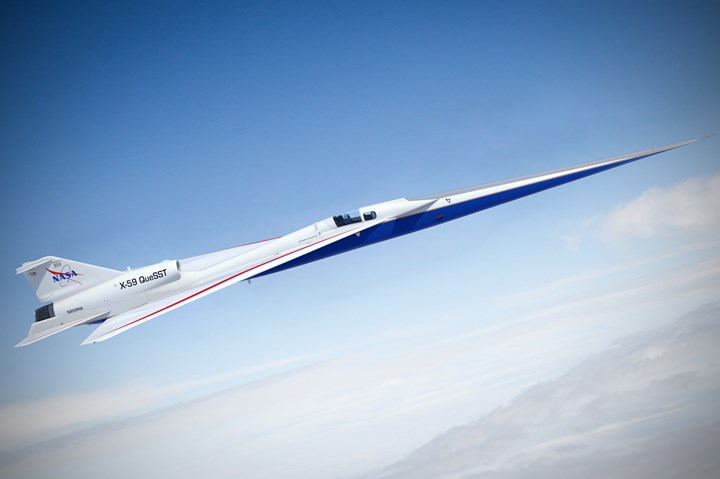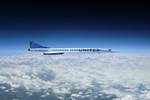Lockheed Martin prepares X-59 for quiet supersonic flight testing
Boom flight demonstration aircraft with composite control surfaces and wing skins to be shipped to Fort Worth, Texas, for additional ground testing.

Artist illustration of the X-59 Quiet SuperSonic Technology aircraft, which will soon take skies as NASA’s first purpose-built, supersonic experimental plane in decades. Photo Credit: Lockheed Martin
The Lockheed Martin team at its Skunk Works facility in Palmdale, Calif., has recently put NASA’s X-59 Quiet SuperSonic Technology (QueSST) aircraft nose into place in preparation for flight testing.
The X-59 is a research aircraft that will fly at supersonic speeds over communities as part of the low boom flight demonstration. Data will be collected on people’s response to the sonic thump sound produced by the plane, with the eventual goal to reverse the existing bans on supersonic flight over land. The aircraft can also potentially cut travel time in half.
The QueSST is split into three subsections: the tail empennage, the main-wing body and the forebody fuselage. Its principle structure is made from aluminum, with high-temperature areas using titanium. Composite control surfaces and wing skins have also been employed; Mongoose robot systems were used to lay up the wing skins and bond the material via ultraviolet light.
The aircraft nose is also an important aspect for its success: Making up almost a third of the length of the aircraft, it is a key element to shaping shockwaves during supersonic flight. The shape of the nose has been designed to turn the noise it produces into what is described as quiet sonic thumps rather than sonic booms. The nose was attached and then removed in preparation for the aircraft being shipped to Fort Worth, Texas, for additional ground testing — to ensure it can withstand the loads and stresses that typically occur during flight — as well as calibrate and test the fuel systems.
The Lockheed Martin team is targeted to finish assembly, conduct test flights and deliver the plane to NASA between now and sometime during 2023.
Related Content
-
Nine factors to consider when designing composites cure tooling
Gary Bond discusses the common pitfalls and compromises when designing good cure tooling and their holistic significance for a robust composite production process.
-
Thermoplastic composites welding: Process control, certification, crack arresters and surface prep
More widespread use of welded composite structures within a decade? Yes, but further developments are needed.
-
Thermoset-thermoplastic joining, natural fibers enable sustainability-focused brake cover
Award-winning motorcycle brake disc cover showcases potential for KTM Technologies’ Conexus joining technology and flax fiber composites.















